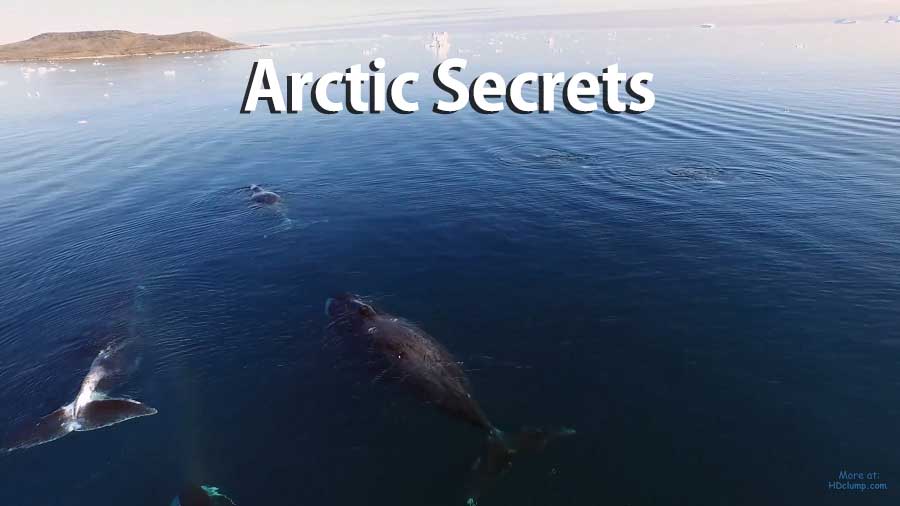Arctic Secrets – Wild Seas – Ninginganiq: North Atlantic bowhead whales have the largest mouths of any living creature and can live up to 200 years. In fact, some still carry harpoon fragments from a century ago. Join two intrepid Inuit tribesmen as they venture into the harsh Arctic region known as Ninginganiq to witness a gathering of these mysterious and awe-inspiring giants.
Embark on a journey into the world’s most unforgiving arctic zones, where land and ice are inseparably joined. Swim through the mammoth Mackenzie Delta, or explore the great tundra of Nunavik. These hostile regions yield little for the hardy wildlife and local Inuit tribes that wait patiently for an all-too-brief summer.
Arctic Secrets – Wild Seas – Ninginganiq
Ninginganiq National Wildlife Area
The Ninginganiq National Wildlife Area (NWA) was designated in 2010 and is the largest NWA in Canada measuring over 336 397 hectares (ha). Located 120 kilometres (km) south of Clyde River, on the north-east coast of Baffin Island, Nunavut, the NWA includes the shoreline and islands of Isabella Bay and adjacent ocean out to 12 nautical miles from shore. The Inuktitut word “Ninginganiq” translates roughly as “the place where fog sits.”
The Ninginganiq NWA provides important marine habitat, the interplay of ocean and wind currents with the shallow banks off the coast of Isabella Bay, deep troughs further offshore, ocean and wind currents, creating ideal conditions for Bowhead Whales. Up to 100 Bowheads have been recorded at one time in Isabella Bay, making this the single largest known concentration for this species anywhere in Canada.
While some of the population, including Cows and calves, move westward through Lancaster Sound in late June and early July, others, mainly adults and large adolescents, remain off the east coast of Baffin Island for the summer and fall. The Ninginganiq NWA also supports healthy populations of Polar Bears, Ringed Seals, King Eiders, Long-tailed Duck, Dovekies, Northern Fulmars, and Narwhal.
Bowhead whale
The bowhead whale (Balaena mysticetus) is a species of baleen whale belonging to the family Balaenidae and the only living representative of the genus Balaena. It is the only baleen whale endemic to the Arctic and subarctic waters. Bowheads are named after their characteristic massive triangular skull, which is used to break through Arctic ice. Other common names of the species are the Greenland right whale or Arctic whale. American whalemen called them the steeple-top, polar whale, or Russia or Russian whale.
Bowheads have the largest mouth of any animal representing almost one-third of the length of the body, the longest baleen plates with a maximum length of 4 m (13.1 ft) and may be the longest-lived mammals, with the ability to reach an age of more than 200 years.
The bowhead was an early whaling target. The population was severely reduced before a 1966 moratorium was passed to protect the species. Of the five stocks of bowhead populations, three are listed as “endangered”, one as “vulnerable”, and one as “lower risk, conservation dependent” according to the IUCN Red List. The global population is assessed as of least concern.
Bowhead whale description
The bowhead whale has a large, robust, dark-coloured body and a white chin/lower jaw. It has a massive triangular skull, which it uses to break through the Arctic ice to breathe. Inuit hunters have reported bowheads surfacing through 60 cm (24 in) of ice.
It also possesses a strongly bowed lower jaw and a narrow upper jaw. Its baleen is the longest of that of any whale, at 3 m (9.8 ft), and is used to strain tiny prey from the water. The bowhead whale has paired blowholes, at the highest point of the head, which can spout a blow 6.1 m (20 ft) high. The whale’s blubber is the thickest of that of any animal, with a maximum of 43–50 cm (17–20 in). Unlike most cetaceans, the bowhead does not have a dorsal fin – an adaptation for spending much time under sea-surface ice.
Bowhead whales are comparable in size to the three species of right whales. According to whaling captain William Scoresby Jr., the longest bowhead he measured was 17.7 m (58 ft) long, while the longest measurement he had ever heard of was of a 20.4 m (67 ft) whale caught at Godhavn, Greenland, in early 1813. He also spoke of one, caught near Spitsbergen around 1800, that was allegedly nearly 21.3 m (70 ft) long.
In 1850, an American vessel claimed to have caught a 24.54 m (80.5 ft) individual in the Western Arctic. Whether these lengths were actually measured is questionable. The longest reliably measured were a male of 16.2 m (53 ft) and a female of 18 m (59 ft), both landed in Alaska. On average, female bowheads are larger than males.

Pingback: Arctic Secrets - Rhythm of the Bay - Hudson Bay - ClumpHD
Pingback: Dan Cruickshank's Adventures in Architecture episode 1